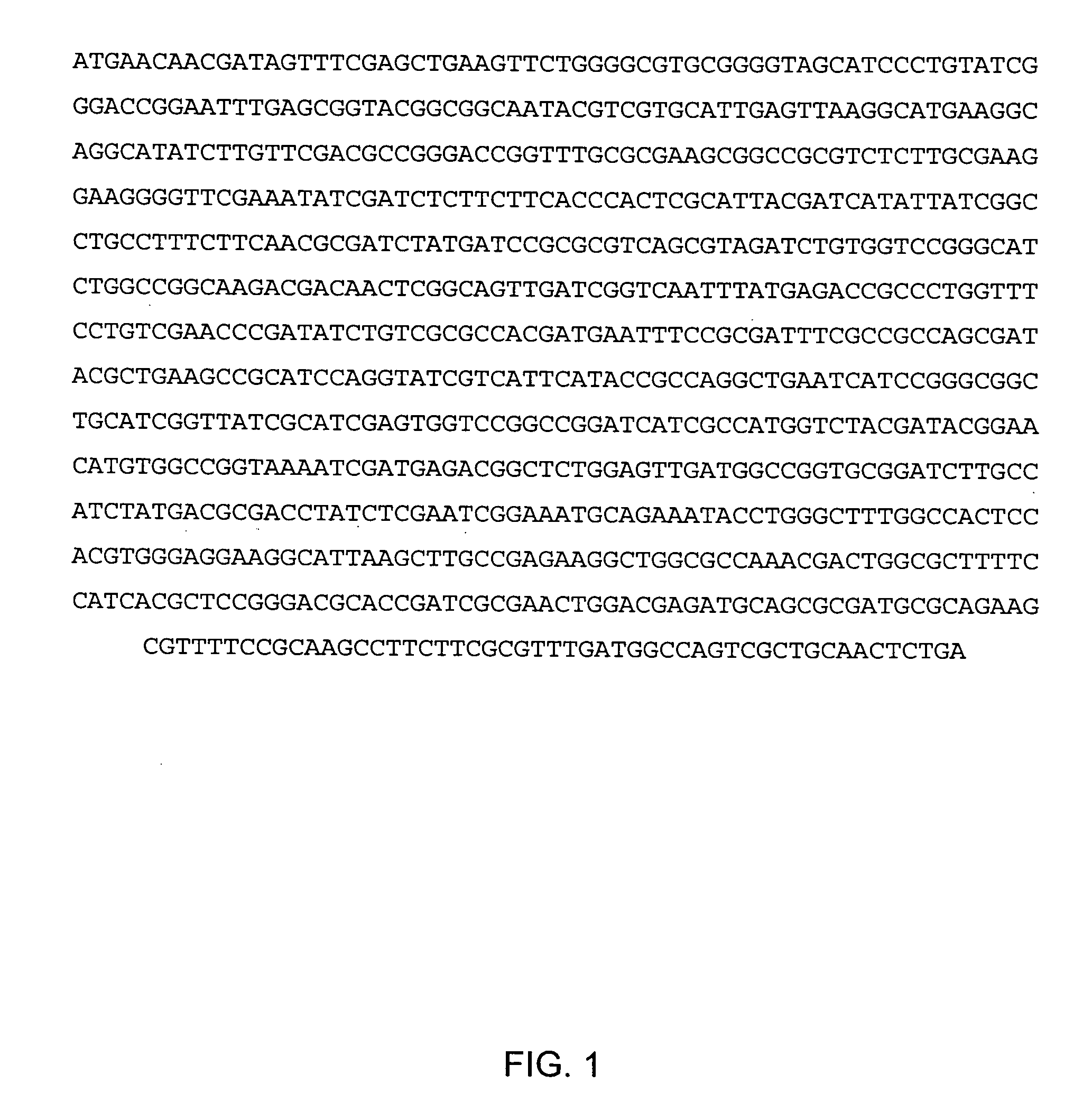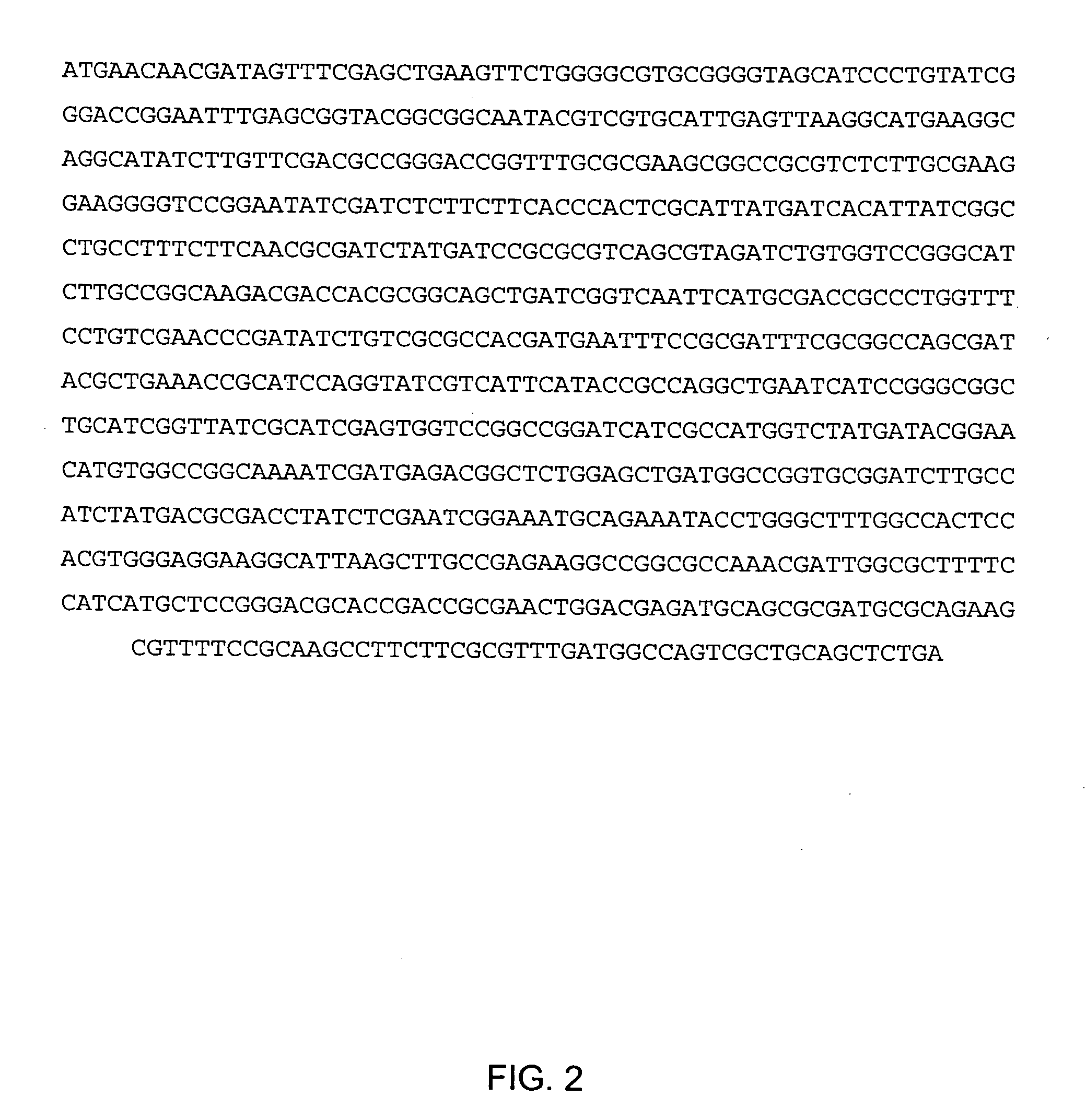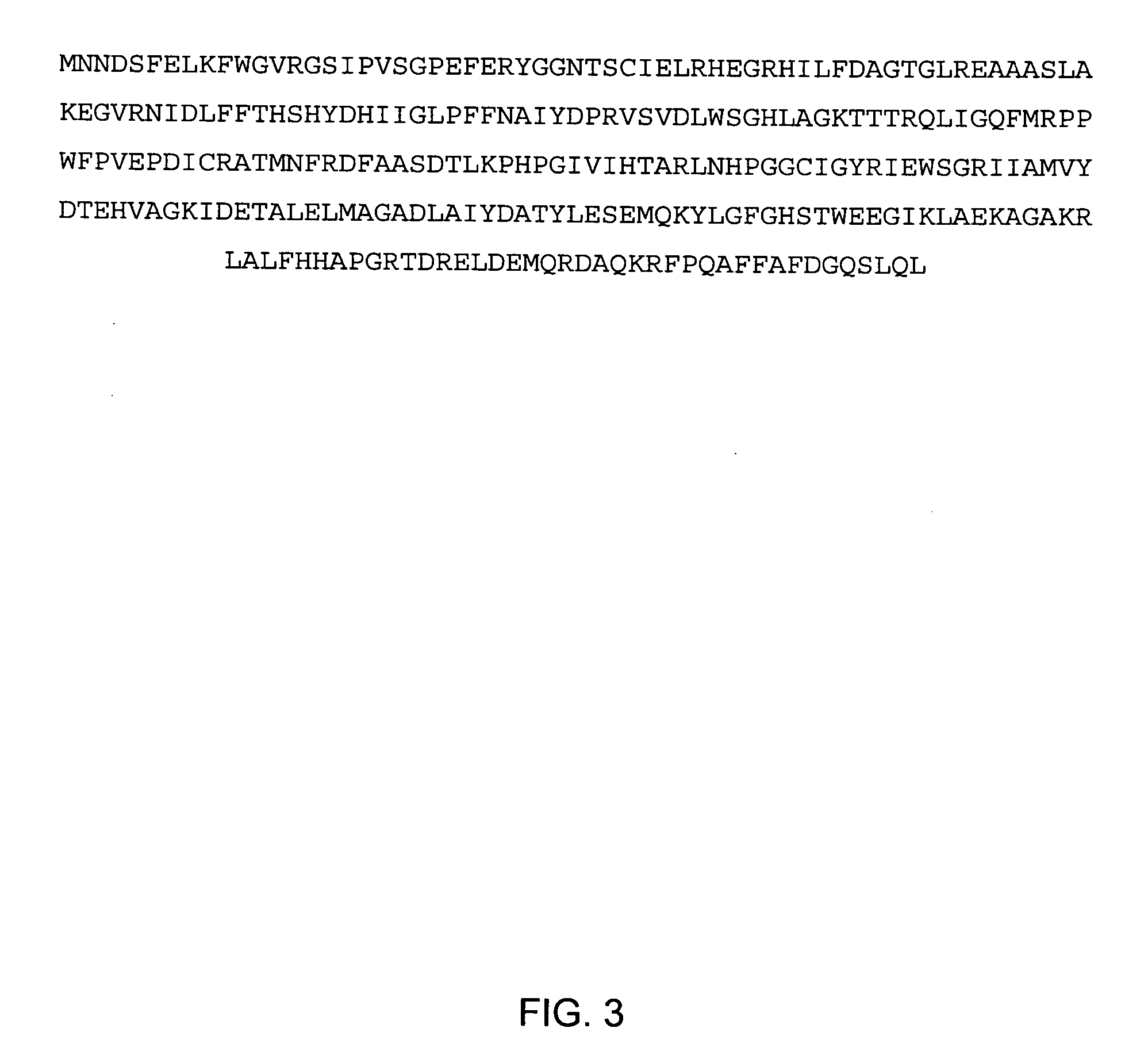Gro-1 herbicide resistance gene and methods for its use
a technology of herbicide resistance and gene, applied in the field of genes encoding herbicide resistance, can solve the problems of toxic to bacterial cells, not only killing plant cells, but also toxic to these bacteria
- Summary
- Abstract
- Description
- Claims
- Application Information
AI Technical Summary
Benefits of technology
Problems solved by technology
Method used
Image
Examples
example 1
Isolation of ATX4133
[0082] ATX4133 was isolated by plating samples of soil on Enriched Minimal Media (EMM) containing glyphosate as the sole source of phosphorus. Since EMM contains no aromatic amino acids, a strain must be resistant to glyphosate in order to grow on this media.
[0083] Two grams of soil were suspended in approximately 30 ml of water, and sonicated for 30 seconds in a sonicating water bath. The sample was vortexed for 5 seconds and permitted to settle for 60 seconds. This process was repeated 3 times. 100 μl of this suspension was added to 3 ml of EMM supplemented with 4 mM glyphosate (pH 6.0). EMM contains (per 900 mls): 10 g sucrose, 2 g NaNO3, 1.0 ml 0.8 M MgSO4, 1.0 ml 0.1 M CaCl2, 1.0 ml Trace Elements Solution (In 100 ml of 1000× solution: 0.1 g FeSO4.7H2O, 0.5 mg CuSO4.5H2O, 1.0 mg H3BO3, 1.0 mg MnSO4. 5H2O, 7.0 mg ZnSO4.7H2O, 1.0 mg MoO3, 4.0 g KCl). The culture was shaken on a tissue culture roller drum for eleven days at 21° C. and then 100 μl was used to ...
example 2
Isolation of ATX4145
[0085] ATX4145 was isolated by plating samples of soil on Enriched Minimal Media (EMM) containing glyphosate as the sole source of phosphorus. Since EMM contains no aromatic amino acids, a strain must be resistant to glyphosate in order to grow on this media.
[0086] Two grams of soil were suspended in approximately 30 ml of water, and sonicated for 30 seconds in a sonicating water bath. The sample was vortexed for 5 seconds and permitted to settle for 60 seconds. This process was repeated 3 times. 100 μl of this suspension was added to 3 ml of EMM supplemented with 4 mM glyphosate (pH 6.0). EMM contains (per 900 mls): 10 g sucrose, 2 g NaNO3, 1.0 ml 0.8 M MgSO4, 1.0 ml 0.1 M CaCl2, 1.0 ml Trace Elements Solution (In 100 ml of 1000×solution: 0.1 g FeSO4.7H2O, 0.5 mg CuSO4.5H20, 1.0 mg H3BO3, 1.0 mg MnSO4.5H2O, 7.0 mg ZnSO4.7H2O, 1.0 mg MoO3, 4.0 g KCl). The culture was shaken on a tissue culture roller drum for sixteen days at 21° C. and then 100 μl was used to i...
example 3
Identification of Strains ATX4133 and ATX4145
[0088] The identity of the strains ATX 4133 and ATX4145 were determined by sequencing of the 16S rDNA region as known in the art. Genomic DNA was isolated from strains Glyl3 and Gly25 using methods described in “Current Protocols in Molecular Biology”. Pelleted cells were resuspended in TE buffer, and treated with proteinase K. The lysate was extracted with CTAB and phenol / chloroform / isoamyl alcohol as known in the art. The resultant DNA was precipitated with isopropanol, and resuspended in TE buffer. 100 ng DNA from each strain was used as template for PCR. The 16S ribosomal RNA gene was amplified by PCR, and the resultant 16S PCR products sequenced directly. A combination of database searching and multiple sequence aligrnents identified the strain pAX4133 as a Rhizobium sp., while pAX4145 was identified as Brevundimonas vesicularis.
PUM
| Property | Measurement | Unit |
|---|---|---|
| temperature | aaaaa | aaaaa |
| temperature | aaaaa | aaaaa |
| pH | aaaaa | aaaaa |
Abstract
Description
Claims
Application Information
 Login to View More
Login to View More - R&D
- Intellectual Property
- Life Sciences
- Materials
- Tech Scout
- Unparalleled Data Quality
- Higher Quality Content
- 60% Fewer Hallucinations
Browse by: Latest US Patents, China's latest patents, Technical Efficacy Thesaurus, Application Domain, Technology Topic, Popular Technical Reports.
© 2025 PatSnap. All rights reserved.Legal|Privacy policy|Modern Slavery Act Transparency Statement|Sitemap|About US| Contact US: help@patsnap.com



